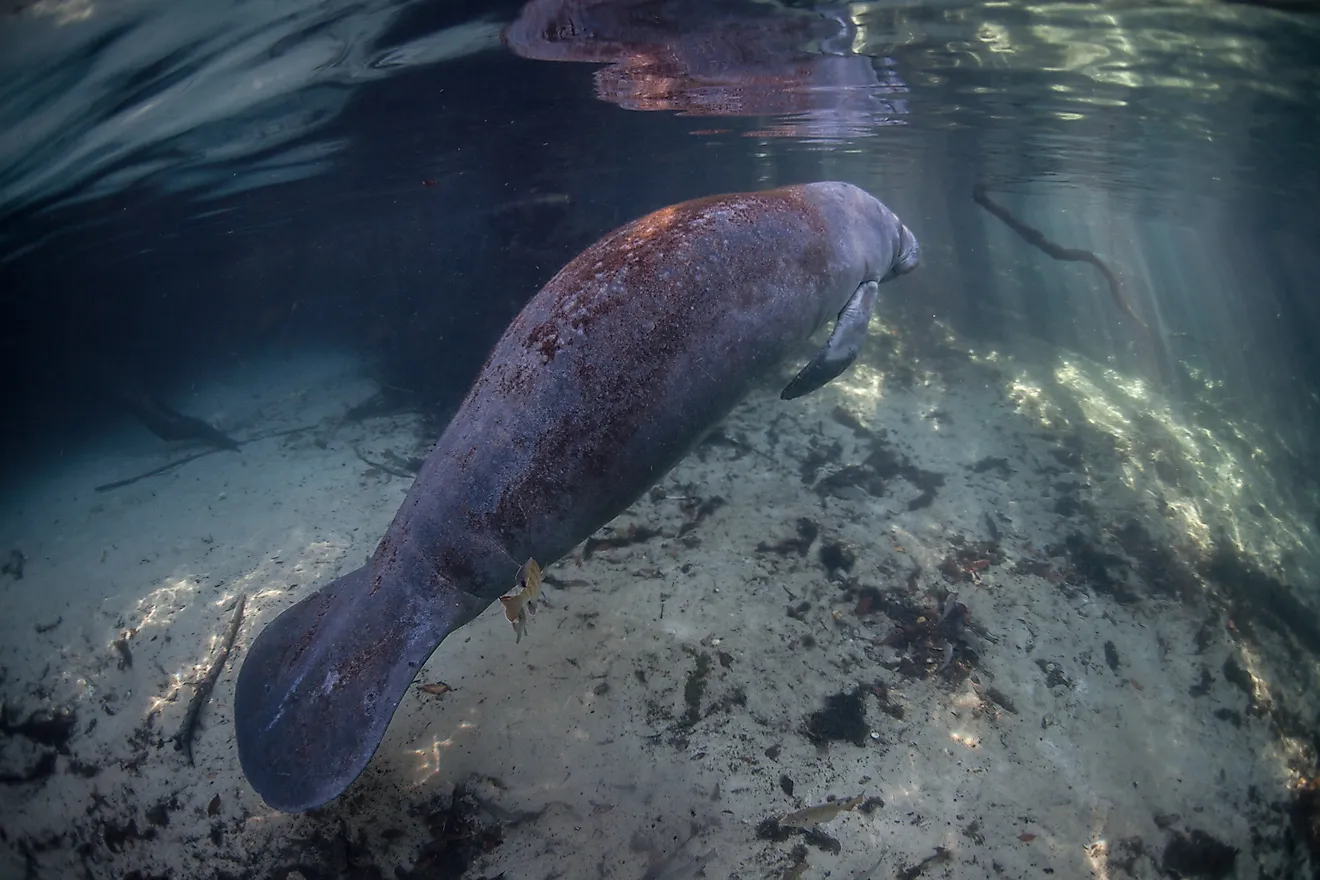West Indian Manatee: Animals of North America

5. Physical Description
The West Indian Manatee is a large aquatic animal, reaching approximately 10 feet long on average and weighing 800 to 1,200 pounds in adulthood. They are covered with tough, wrinkled, brown-to-gray skin, which sprouts bristles that are thought to give the manatees a way to detect pressure changes in the water. The manatee’s movements are guided by short flippers and a paddle-shaped tail, assisting them in living a nomadic lifestyle which may last for as long as fifty years. The very large amount of plants they consume causes the manatee to discharge gas, which in turn makes them particularly buoyant. Manatees are gentle, slow animals, swimming at speeds of 4 miles per hour. They spend much of their lives, at least when not travelling in nomadic migration, eating and resting suspended in the water or on the bottom of rivers and lakes, coming up for air in short bursts.
4. Diet
The manatee is able to descend below water for up to 12 minutes to feed on plants. Eating for 5 to 8 hours every day, they can consume ten to fifteen percent of their body weights a day utilizing their highly unusual teeth, which are one of the most interesting of their evolutionary features. The West Indian manatee chews with "marching molars," which are constantly replaced. New teeth begin at the back of the mouth and wear down as they march forward, eventually falling out when another set are ready to bite into the sandy and stringy plants which constitute their diets.
3. Habitat and Range
For their size, they are very agile and able to perform all manner of playful leaps and rolls in the water when their mood inclines them to do so. West Indian manatees travel very widely, being found at times from the Caribbean to the Gulf of Mexico and the Atlantic coast of the United States, as far north as Virginia, and as far south as the waters off of northeastern and central-eastern South America. They move with equal ease and unexpected grace for their size in freshwater, brackish, and saltwater environments alike. Traveling great distances between winter and summer feeding areas, they congregate in river mouths, coves, and bays. They are found in cold weather around warm springs, and around power plants which discharge warm water.
2. Behavior
Manatees have no known enemies in the animal kingdom. A brave creature, even alligators may give way to the manatee’s gentle nudge. Manatees communicate with each other by emitting underwater sounds that have been recorded as a series of squeals, by which a mother maintains constant contact with her calves. Hunted in the past for their fat used in lamps and bones for their alleged medical purposes, they have become a highly protected species, and are listed as "Vulnerable". Their low reproductive rates, the closure of power plants, and losses of warm-water habitat puts manatees at risk. However, by far, their greatest danger to survival are fast-moving motorboats, which strike and kill many members of the species every year.
1. Reproduction
The female West Indian manatee reaches sexual maturity at 9 years old. From this time onward, she may start to become regularly encircled by swarms of males, and take multitude breeding partners from them. Their gestation period is approximately 13 months, with calves being born at any time of the year, in any environment, and, on an average, once every two to five years per mother. The calves nurse underwater for about three minutes at a time from a nipple located behind their mother’s forelimb. After weaning, they will begin eating plants after a few weeks. Only after the arrival of another sibling newborn, however, will a calf cease its dependency on its mother altogether.











